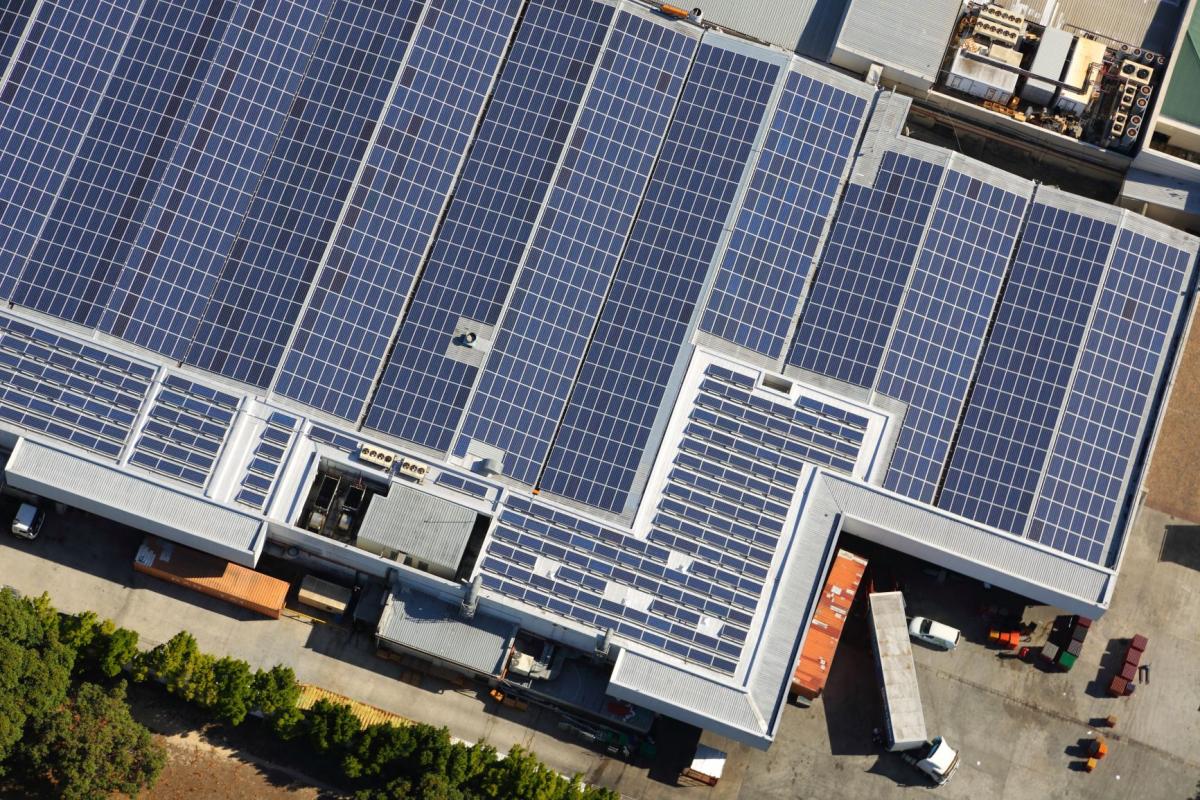A growing number of shopping centers in Australia are being transformed into power-generating facilities with the addition of embedded renewable-based microgrids. These hybrid systems allow owners to provide tenants with cheaper, cleaner power.
The rooftops of large retail buildings are ideal locations for solar panels as they are flat, spacious, and almost always exposed to the sun. In response to rising energy costs, consumer pressure, and declining equipment costs, a growing number of shopping mall owners in Australia are turning the rooftops of commercial spaces into power plants with on-site solar arrays and energy storage.
Embedded renewables-based networks are emerging throughout Australia’s retail landscape on big box stores, shopping malls, and large grocery outlets, allowing shopping center owners to generate power on-site and sell it to tenants. Owning the microgrid allows centers to offset their high electricity demand with cheaper solar power, reduce energy expenses, and generate revenue, while also contributing to a cleaner grid.

The projects can also increase brand value, enhance the sustainability rating of the properties, and help meet carbon reduction goals.
The Narellan Town Centre (NTC), a shopping mall outside of Sydney, is the latest retail center to embrace this trend. NTC owners, Dart West Retail, recently shared plans for a 29.9 million dollar solar + storage microgrid made possible through a partnership with CEP Energy.
NTC is one of Australia’s largest privately owned shopping centers, with 76,000 square meters of commercial space with over 220 specialty retail outlets, a cinema complex, and parking for 3,000 cars. Dart West Retail says that the solar and battery embedded network will provide its retail tenants access to renewable electricity at a roughly 20% discount to grid power.
The project will be developed by CEP.Energy and will include a 50,000-square-meter array of solar modules that will provide 10 MW of capacity, supported by a 20 MWh battery storage system, making it the biggest single solar and battery system to be installed on any shopping center in Australia to date.
CEP.Energy finances, builds, owns, and operates renewable microgrids and virtual power plants in partnership with property portfolio groups. The company aims to provide low-cost energy for commercial, retail and industrial tenants across Australia within the next five years with a portfolio that includes 1.5 GW of solar and 1 GW of energy storage.
“Embedded renewable energy networks offer long term benefits to landlords, tenants, investors and the community,” CEP.Energy CEO Peter Wright said in a statement. “NTC’s retail customers can expect to save about 20 percent on their electricity bills.”
While this cost savings is significant, embedded renewables-based microgrids also open up innovative energy trading opportunities. In 2018, Vicinity Centres, a retail management company launched a solar trading trial in South Australia at Castle Plaza Shopping Centre, using blockchain technology to use and trade the on-site solar energy either within the network or send it back to the national grid to be consumed by others.
The blockchain-based system enables Vicinity to manage its energy use and distribution in real-time, switching between solar and national grid energy, in order to provide the most economical power pricing for the shopping center’s 70 tenants.
An increasing number of retail management companies are creating interconnected energy networks and mixed-use microgrid projects that include on-site generation and peer-to-peer energy trading. These projects not only allow them to provide competitive energy pricing for retailers and customers, in the future they could supply clean, renewable energy to the surrounding community, making the most of their retail space.

Learn More
Join Dr. Peter Lilienthal and other presenters from UL for a free educational webinar titled De-Risking Microgrids and DERs in Australia, on January 20, 2021, from 6:00 – 7:00 p.m. MDT (January 21, from 12:00 – 1:00 p.m. AEDT). Speakers will examine the challenges of designing, building, and operating hybrid power systems that incorporate both renewable resources and storage and discuss best practice design choices and cost-effective operation and maintenance. Learn more and register for the webinar here.
HOMER software delivers industry-leading system simulations, optimization, sensitivity analysis and best-in-class storage models across three categories of hybrid systems: islanded microgrids, grid-connected distributed generation, and front-of-the-meter utility-scale storage and hybrid systems.
Learn More
Visit UL Solutions HOMER® software to learn more about HOMER Pro, HOMER Grid and HOMER Front modeling and optimization software, download complimentary trials, sign up for training and explore our extensive knowledge base and other support documents.
